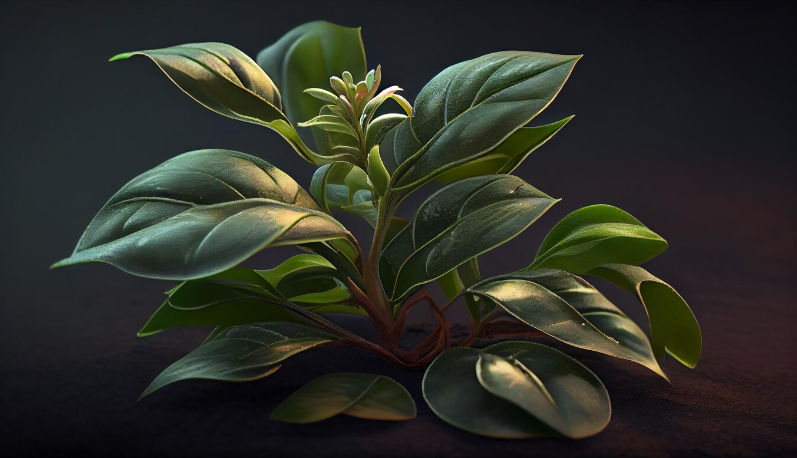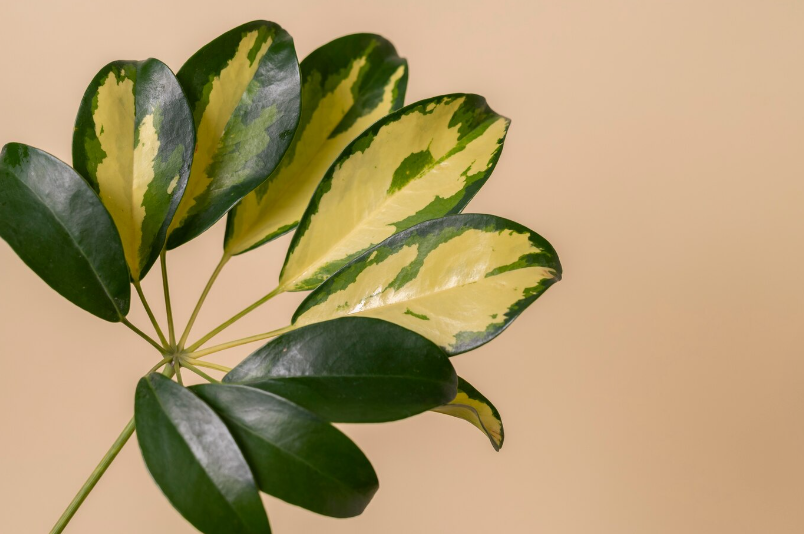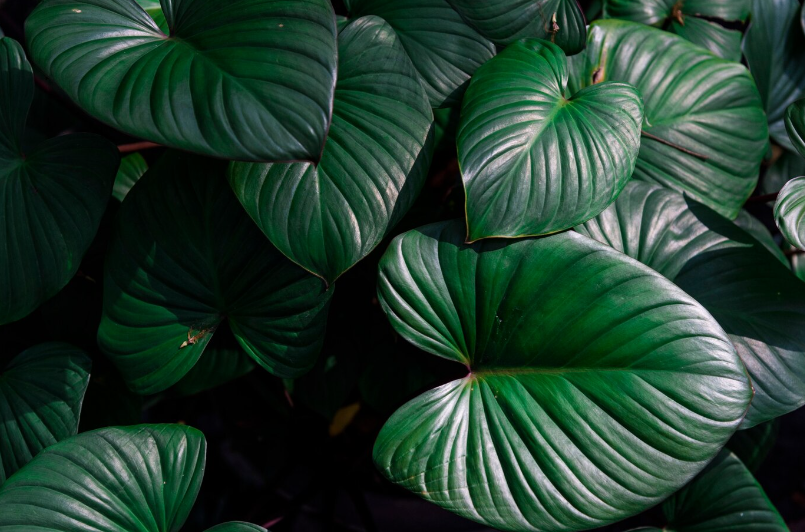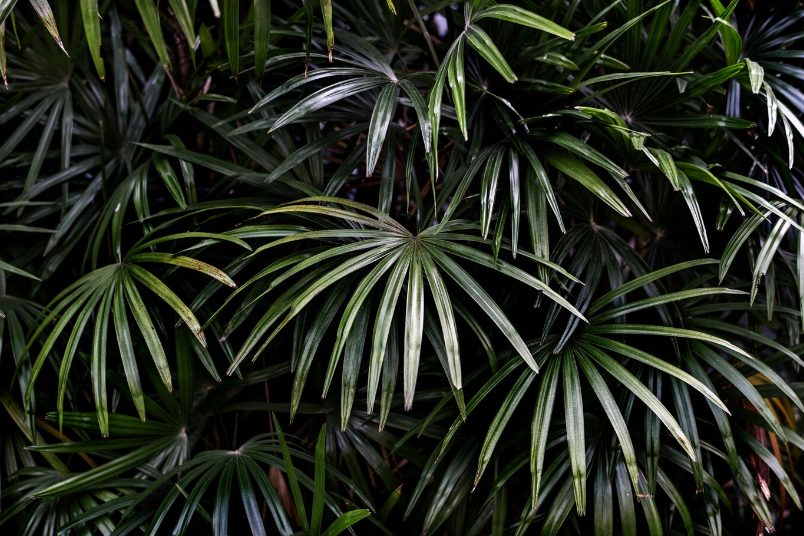Optimizing Light for Philodendron Micans
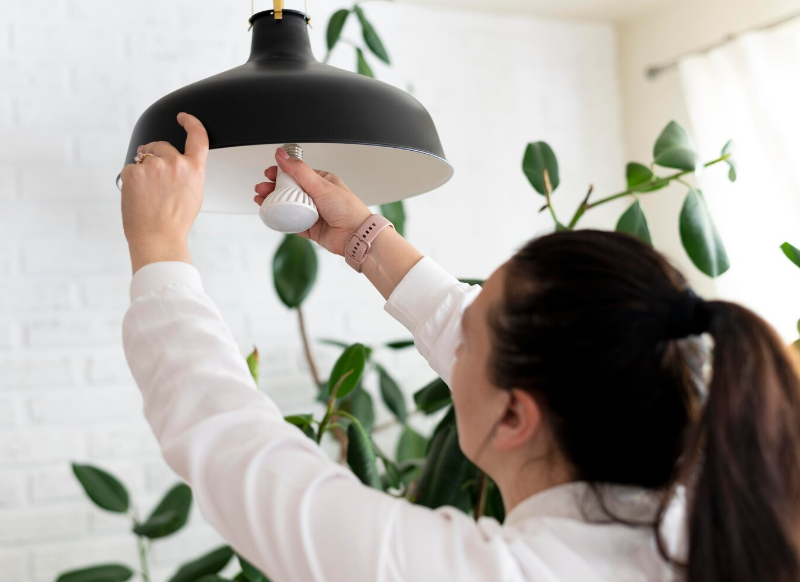
Philodendron Micans, also known as the Velvet Leaf Philodendron, is a popular houseplant due to its attractive foliage and low maintenance requirements. However, to ensure that your Philodendron Micans thrives and remains healthy, it is essential to provide it with the right amount and quality of light.
Understanding the light requirements
Like many other houseplants, Philodendron Micans thrives in bright, indirect light. Direct sunlight can cause the leaves to burn and turn yellow, while insufficient light can lead to poor growth and the plant becoming leggy.
Providing bright, indirect light
To optimize light conditions for your Philodendron Micans, place it near a window with filtered light or use sheer curtains to diffuse the sunlight. Avoid placing the plant in direct sunlight, especially during the hot afternoon hours, as this can scorch the leaves.
Supplementing with artificial light
If you don’t have access to sufficient natural light, you can supplement it with artificial light. Choose a full spectrum LED grow light and position it 1-2 feet above the plant. Keep the light on for 10-12 hours a day to simulate natural daylight. This artificial light setup can help your Philodendron Micans thrive even in low-light environments.
By optimizing the light conditions for your Philodendron Micans, you can ensure that it grows vigorously, maintains its beautiful foliage, and remains a joy to behold in your home.
Light Requirements and Placement
Philodendron Micans is a tropical plant that thrives in bright, indirect light. It is important to find the right balance of light for optimal growth and health. Here are some factors to consider when it comes to light requirements and placement for your Philodendron Micans:
- Light intensity: Philodendron Micans prefers medium to high light levels. It does best in bright, indirect light. Direct sunlight should be avoided as it can cause the leaves to burn.
- Light duration: Philodendron Micans requires around 8 to 12 hours of light per day to thrive. This can be achieved by placing it in a well-lit room or near a window with filtered light.
- Light direction: It is ideal to place your Philodendron Micans in an area where it can receive light from all directions. This allows for even growth and prevents the plant from leaning towards the light source.
- Light quality: The quality of light is important for the health of your Philodendron Micans. It is best to provide it with natural light rather than artificial light. If artificial light is used, choose a full-spectrum LED grow light.
By providing your Philodendron Micans with the right amount and quality of light, you can ensure its optimal growth and vibrant foliage. Remember to monitor the light conditions and adjust if necessary to keep your plant happy and thriving.
Determining the Ideal Amount of Light for Philodendron Micans
Proper lighting is essential for the growth and overall health of Philodendron Micans. However, providing the correct amount of light can be a challenge for many plant owners. It’s important to strike a balance between too much sunlight, which can quickly damage the leaves, and too little light, which can stunt the growth of the plant.
Indirect Indirect sunlight is the best option for Philodendron Micans. Placing the plant near a window that receives bright, filtered light is ideal. Direct sunlight can scorch the leaves, so it’s best to avoid placing the plant in direct sunlight, especially during the hot afternoon hours.
If the leaves of your Philodendron Micans start to turn yellow, it may be an indication that the plant is getting too much direct sunlight. Consider moving the plant to a slightly shadier location.
On the other hand, insufficient light can lead to leggy growth and pale foliage. If the leaves appear elongated and the color seems faded, it may be a sign of inadequate lighting. In this case, consider moving the plant to an area with slightly more light, such as a window that receives bright but indirect light.
Observing the plant’s behavior can also help determine if it is receiving the right amount of light. If the leaves are lush and the plant looks healthy, it’s a good indication that the lighting conditions are suitable. However, if the leaves start to droop or the plant looks stretched out, it may require more or less light.
In summary, it’s essential to find the perfect balance of light for Philodendron Micans. Although it prefers bright, indirect light, it’s important to monitor the plant’s behavior and adjust the lighting as necessary. By providing the ideal amount of light, you can ensure that your Philodendron Micans thrives and remains healthy.
Best Window Placement: North Facing vs. Other Orientations
When it comes to optimizing the light conditions for your Philodendron Micans, window placement plays a crucial role. Different orientations of windows provide varying levels and qualities of light, so it’s important to choose the best placement for your plant’s needs.
One popular window orientation to consider is north-facing. North-facing windows receive the least amount of direct sunlight throughout the day, making them ideal for plants that prefer indirect or low light conditions. Philodendron Micans can thrive near a north-facing window since they thrive in medium to low light conditions.
In comparison, east-facing windows receive morning sunlight, which tends to be less intense and more gentle. This orientation provides a good balance between direct and indirect light. Philodendron Micans plants can benefit from an east-facing window, especially if it is filtered by a sheer curtain or blind to prevent direct sunlight exposure.
On the other hand, west-facing windows receive the strongest and brightest afternoon sunlight, which can be quite intense. Although Philodendron Micans plants can tolerate some direct sunlight, excessive exposure can lead to sunburn and damage to the leaves. If you have a west-facing window, it’s recommended to place your plant a couple of feet away from the window or use a sheer curtain to filter the sunlight.
Lastly, south-facing windows receive the most intense and direct sunlight throughout the day. While Philodendron Micans can tolerate some direct sunlight, south-facing windows may provide too much light, especially during the summer months. If you have a south-facing window, it’s best to place your plant several feet away to prevent excessive exposure and potential damage.
In conclusion, the best window placement for your Philodendron Micans depends on the orientation of the window and the specific lighting needs of your plant. North-facing windows provide ideal low light conditions, while east-facing windows offer a good balance between direct and indirect light. West-facing and south-facing windows can be used but require careful monitoring and light filtration to prevent excessive exposure.
Deciphering Light Terms: What Does Bright Indirect Light Mean?
Understanding and providing the right amount of light for your Philodendron Micans is crucial for ensuring its proper growth and overall health. However, the various terms used to describe light conditions can often be confusing. One common term you may come across is “bright indirect light.”
Bright indirect light refers to a lighting condition where the plant receives ample light, but is not exposed to direct sunlight. It is important to note that different plants have different light requirements, and what may be considered bright indirect light for one plant may not be sufficient for another.
When it comes to Philodendron Micans, bright indirect light is ideal. It thrives in bright, filtered light where it can receive the benefits of sunlight without being scorched by its intensity. Placing your Philodendron Micans near a north or east-facing window is often recommended, as these windows provide the right balance of light intensity and duration.
Plants that receive bright indirect light typically display certain characteristics. Their foliage is vibrant and healthy, with deep green colors and strong stems. The leaves are often larger and more spread out compared to plants kept in lower light conditions. However, it is important to avoid exposing your Philodendron Micans to direct sunlight, as this can cause leaf burn and other damage.
Remember that light conditions can vary depending on the location and time of year. It is essential to monitor the light levels and make adjustments as needed. If you notice your Philodendron Micans showing signs of stress, such as wilted leaves or slowed growth, it may be an indication that the light conditions need to be adjusted.
In conclusion, understanding the meaning of terms such as bright indirect light is essential for providing optimal light conditions for your Philodendron Micans. By ensuring your plant receives the right amount of light, you can promote its growth and enhance its overall beauty.
Enhancing Growth and Leaf Health
Philodendron Micans is a beautiful plant that thrives in the right conditions. To enhance the growth and leaf health of your Philodendron Micans, there are a few key factors to consider.
- Proper Lighting: Philodendron Micans prefer bright, indirect light. Place your plant near a window where it can receive bright, filtered light. Avoid direct sunlight, as it can scorch the leaves.
- Consistent Watering: It is important to maintain consistent moisture levels for your Philodendron Micans. Check the soil regularly and water when the top inch feels dry. Avoid overwatering, as it can lead to root rot.
- Humidity: Philodendron Micans thrive in humid environments. Increase humidity levels by misting the leaves regularly or placing the plant on a tray filled with water and pebbles.
- Appropriate Temperature: Philodendron Micans prefer temperatures between 65-75°F (18-24°C). Avoid exposing the plant to temperatures below 55°F (13°C) or above 85°F (29°C).
- Nutrient-rich Soil: Use a well-draining potting mix that is rich in organic matter. This will provide essential nutrients and allow proper aeration for the roots.
- Regular Fertilization: Feed your Philodendron Micans with a balanced, water-soluble fertilizer once a month during the growing season (spring and summer). This will help promote healthy growth and vibrant foliage.
- Pruning: Regularly prune your Philodendron Micans to maintain its shape and encourage bushier growth. Remove any yellow or dead leaves to improve overall plant health.
- Pest Control: Keep an eye out for common houseplant pests like spider mites and aphids. If you notice any infestation, promptly treat your Philodendron Micans with an appropriate insecticide or insecticidal soap.
By following these tips, you can enhance the growth and leaf health of your Philodendron Micans and enjoy a thriving and beautiful plant.
Techniques for Darkening Leaves of Philodendron Micans
Philodendron Micans is known for its beautiful, velvety leaves that have a deep, green color. However, in some cases, the leaves of this plant may not develop their full potential and may appear lighter or paler than desired. If you want to achieve darker and more vibrant leaves for your Philodendron Micans, there are several techniques you can try.
1. Increase the amount of indirect sunlight: Philodendron Micans thrives in bright, indirect light. By placing your plant in a spot with more indirect sunlight, you can encourage the leaves to darken. However, be careful not to expose the plant to direct sunlight, as it can lead to leaf burn.
2. Adjust the duration of light exposure: Philodendron Micans needs a balance of light and darkness for optimal growth. Try adjusting the duration of light exposure to mimic the plant’s natural environment. For example, if your plant is receiving too much artificial light, you can reduce the hours of exposure to achieve darker leaves.
3. Supplement with grow lights: If you’re unable to provide sufficient natural light, you can supplement with grow lights. LED grow lights are a popular choice as they provide the necessary spectrum of light for plant growth. Make sure to position the lights at an appropriate distance from the plant to avoid damaging the leaves.
4. Maintain consistent humidity: Philodendron Micans thrives in humid environments. By ensuring consistent humidity levels, you can promote healthier and darker leaves. Mist the leaves regularly or use a humidifier to create a more humid atmosphere for your plant.
5. Use a suitable fertilizer: Providing the right nutrients can contribute to the overall health and color of the leaves. Look for a balanced fertilizer specifically formulated for houseplants and follow the instructions for application. Avoid over-fertilization, as it can cause leaf burn or other issues.
6. Consider temperature fluctuations: Philodendron Micans prefers temperatures between 65-75°F (18-24°C). Slight temperature fluctuations between day and night can stimulate the plant to produce darker leaves. However, extreme temperature changes can be harmful, so it’s important to maintain a stable and suitable temperature range for your plant.
By implementing these techniques, you can help your Philodendron Micans develop darker and more vibrant leaves. Remember to monitor the plant closely and make adjustments as needed to ensure its optimal growth and health.
Strategies for Encouraging Bushy Growth and Larger Leaves
To encourage bushy growth and stimulate the development of larger leaves in your Philodendron Micans, follow these strategies:
1. Provide Adequate Light: Place your Philodendron Micans in a spot where it can receive bright, indirect light for 6-8 hours a day. Avoid exposing it to direct sunlight, as it can scorch the leaves. Using a sheer curtain or placing it a few feet away from a sunny window can provide the perfect balance of light.
2. Rotate the Plant: To ensure even growth and prevent the plant from leaning towards the light source, rotate the Philodendron Micans every few weeks. This will encourage all sides of the plant to receive sufficient light, resulting in a more bushy and balanced growth.
3. Keep the Temperature Optimal: Philodendron Micans thrives in temperatures between 65-75°F (18-24°C). Avoid exposing it to extreme temperature fluctuations or drafts, as it can hinder its growth. Maintaining a stable temperature will provide an ideal environment for the plant to flourish.
4. Humidity is Key: Philodendron Micans appreciates high humidity levels. You can increase humidity by placing a tray filled with water near the plant, using a humidifier, or misting the leaves regularly. This will prevent the leaves from drying out and encourage healthy growth.
5. Fertilize Regularly: Feed your Philodendron Micans with a balanced liquid houseplant fertilizer every 4-6 weeks during the growing season (spring and summer). This will provide the necessary nutrients for bushy growth and vibrant foliage. Follow the instructions on the fertilizer packaging for proper dilution and application.
6. Prune for Bushiness: Regularly prune the Philodendron Micans to promote bushy growth. Cut back any leggy or elongated stems to encourage the plant to branch out. Snip just above a leaf node to prompt new growth in that area. Pruning will also help maintain the desired shape and density of the plant.
7. Avoid Overwatering: Philodendron Micans prefers slightly moist but well-draining soil. Overwatering can lead to root rot and hinder its growth. Allow the top inch of soil to dry out before watering again. Use your finger to check the moisture level and adjust your watering schedule accordingly.
8. Keep an Eye Out for Pests: Regularly inspect your Philodendron Micans for any signs of pests, such as mealybugs or spider mites. These pests can damage the leaves and hinder growth. If you spot any pests, treat them promptly with an appropriate insecticide or wipe them off with a damp cloth.
By following these strategies, you can encourage bushy growth and larger leaves in your Philodendron Micans, creating a lush and vibrant plant.
Addressing Unusual Leaf Color Changes in Philodendron Micans
Philodendron Micans is known for its beautiful leaves that are typically dark green with copper undertones. However, sometimes you may notice unusual leaf color changes in your plant. Understanding the reasons behind these color changes can help you address the issue and ensure the health and vibrancy of your Philodendron Micans.
Here are some common causes of unusual leaf color changes in Philodendron Micans:
| Cause | Possible Solutions |
|---|---|
| Insufficient light | Adjust the placement of your plant to provide it with more indirect or filtered sunlight. Avoid placing it directly under harsh, intense sunlight. |
| Excessive light | If your plant is exposed to too much direct sunlight, move it to a spot with less intense light or use sheer curtains to filter the light. |
| Overwatering | Too much water can lead to root rot and nutrient deficiencies, which can cause leaf color changes. Allow the top few inches of soil to dry out before watering again, and ensure good drainage. |
| Underwatering | Underwatering can result in stress to the plant, leading to leaf discoloration. Water your Philodendron Micans thoroughly when the top inch of soil feels dry. |
| Poor soil quality | Using a well-draining, nutrient-rich soil mix can help prevent nutrient deficiencies and improve the coloration of your plant’s leaves. |
| Nutrient deficiencies | Ensure your Philodendron Micans is receiving adequate nutrients by fertilizing it regularly with a balanced, diluted houseplant fertilizer. |
| Temperature extremes | Avoid exposing your plant to extreme temperatures or drafts, as they can stress the plant and cause leaf color changes. Maintain a temperature range of 65-85°F (18-29°C). |
By addressing these potential causes and providing optimal care for your Philodendron Micans, you can help maintain its vibrant and attractive leaf coloration.
Balancing Light and Other Environmental Factors
When it comes to optimizing light for your Philodendron Micans, it’s important to consider other environmental factors as well. While light is crucial for its growth, factors like temperature, humidity, and air circulation also play a significant role in its overall well-being.
Firstly, let’s discuss temperature. Philodendron Micans thrives in temperatures between 65-75°F (18-24°C). It’s important to avoid extreme temperature fluctuations, as they can stress the plant and affect its growth. Keeping the temperature consistent within the suggested range will create an ideal environment for your Philodendron Micans.
In addition to temperature, maintaining proper humidity levels is essential. This plant prefers higher humidity levels, ideally ranging between 50-70%. You can achieve this by misting the leaves, using a humidifier, or placing a tray of water near the plant. Adequate humidity helps to prevent leaf browning and ensures healthy growth.
Air circulation is another crucial aspect to optimize alongside light. Good air circulation prevents the buildup of stagnant air and mold growth. You can ensure proper air circulation by placing the Philodendron Micans in a well-ventilated area or using a fan to gently circulate the air. Avoid placing it in drafty areas, as it can harm the plant.
To maintain a balanced environment for your Philodendron Micans, it’s important to consider these factors collectively. By providing the right amount of light, temperature, humidity, and air circulation, you’ll create an optimal growing environment and encourage healthy growth in your Philodendron Micans.
Managing Low Light Conditions and Full Sun Exposure
Proper management of light conditions is crucial for the health and growth of Philodendron Micans. Whether you are dealing with low light conditions or full sun exposure, here are some tips to optimize light for your plant:
Low Light Conditions:
1. Place your Philodendron Micans in a spot with bright, indirect light. It can tolerate lower light levels, but it will still require some sunlight to thrive.
2. Avoid placing the plant in a completely dark area or too far away from natural light sources. This can lead to poor growth and leggy stems.
3. If you are growing your plant indoors, consider using artificial grow lights. LED grow lights are a popular choice and can provide the necessary light for your Philodendron Micans.
4. Monitor the plant’s growth and adjust the lighting if necessary. If you notice that the leaves are becoming pale or elongated, it may be a sign that the light levels are too low.
Full Sun Exposure:
1. While Philodendron Micans can tolerate some direct sunlight, it is best to avoid placing it in full sun for extended periods. Intense sunlight can cause the leaves to burn and damage the plant.
2. If you want to place your plant in a sunny spot, make sure to provide some shade during the hottest parts of the day. This can be achieved by placing the plant near a sheer curtain or using a shade cloth.
3. Regularly monitor the plant for signs of sunburn, such as brown or scorched leaves. If you notice any damage, move the plant to a shadier location and trim off any affected leaves.
4. Consider acclimating your Philodendron Micans gradually to higher light levels to prevent shock. Start by exposing it to a few hours of direct sunlight per day and gradually increase the duration over a few weeks.
Remember, finding the right balance of light for your Philodendron Micans is key to its overall health and growth. With proper management, your plant will thrive and reward you with its beautiful foliage.
The Role of Humidity: To Mist or Not to Mist Philodendron Micans
Humidity plays a crucial role in the health and growth of Philodendron Micans. This tropical plant is native to the rainforests of Central and South America, where humidity levels are naturally high. Creating the right humidity conditions for your Philodendron Micans is essential for its overall well-being.
There is often debate among plant enthusiasts about whether misting is beneficial for Philodendron Micans. While misting can help increase humidity levels temporarily, it may not be the most effective method for maintaining consistent humidity over time. Misted water evaporates quickly, and the effects on humidity are short-lived.
Instead of relying solely on misting, there are other methods to consider for maintaining humidity levels. One approach is placing the Philodendron Micans on a pebble tray filled with water. The water provides a constant source of humidity as it evaporates. Alternatively, using a humidifier in the vicinity can help control humidity levels more effectively.
Another factor to consider is the natural habitat of the Philodendron Micans. In their native rainforest environment, these plants are exposed to high humidity not only from rainfall but also from the dense canopy above that creates a moist microclimate. Therefore, replicating these conditions as closely as possible in your home will likely result in healthier growth.
It’s important to note that while humidity is crucial for Philodendron Micans, excessive moisture can lead to issues such as root rot or fungal diseases. It’s essential to strike a balance. Monitor the humidity levels using a hygrometer and make adjustments accordingly.
In conclusion, humidity plays a vital role in the well-being of Philodendron Micans. While misting can provide temporary relief, other methods such as using pebble trays or humidifiers are more effective for maintaining consistent humidity levels. By replicating the natural rainforest environment, you can create optimal conditions for your Philodendron Micans and encourage healthy growth.
Troubleshooting Sticky Leaves and Other Signs of Light Issues
If you notice that the leaves of your Philodendron Micans are becoming sticky or have a shiny appearance, it may be a sign that the plant is not receiving enough light. Sticky leaves are often an indication that the plant is not able to properly transpire, which can be caused by a lack of light.
In addition to sticky leaves, you may also notice other signs of light issues in your Philodendron Micans. These can include:
- Yellowing leaves: If your plant is not receiving enough light, the leaves may start to turn yellow. This is because the chlorophyll in the leaves is not able to properly absorb sunlight, leading to a loss of green pigment.
- Leggy growth: Insufficient light can also cause the Philodendron Micans to grow long and leggy. The plant will stretch towards the nearest light source in an attempt to receive more light, resulting in thin and weak stems.
- Lack of new growth: If your plant is not getting enough light, it may also stop producing new leaves. This is because the plant needs adequate light to fuel the process of photosynthesis, which is essential for growth.
- Leaf drop: In severe cases of light deprivation, the Philodendron Micans may start to drop its leaves. The plant may prioritize conserving energy and allocate resources away from older leaves, causing them to fall off.
If you are experiencing any of these issues with your Philodendron Micans, it is important to evaluate its light exposure and make adjustments as necessary. Consider moving the plant to a brighter location or providing artificial light sources, such as a grow light, to ensure it receives the right amount of light for optimal growth.
Advanced Care and Maintenance
In addition to providing the right amount of light for your Philodendron Micans, there are several other factors that contribute to its overall health and well-being. Proper care and maintenance of your plant will ensure its longevity and vibrant growth.
| Watering | Humidity | Fertilizing |
|---|---|---|
| Water your Philodendron Micans thoroughly, ensuring that the soil is evenly moist. Avoid overwatering, as it can lead to root rot. Allow the top inch of soil to dry out before watering again. | Maintain a moderate to high level of humidity around your plant. You can achieve this by placing a tray of water near the plant or using a humidifier. Mist the leaves regularly to increase humidity. | Fertilize your Philodendron Micans every two to four weeks during the growing season. Use a balanced, water-soluble fertilizer and follow the instructions on the packaging. Avoid over-fertilizing, as it can cause fertilizer burn. |
Pruning is another important aspect of care for Philodendron Micans. Remove any yellow or damaged leaves to promote new growth. You can also trim back leggy or overgrown stems to maintain a compact, bushy shape.
It’s essential to keep an eye out for pests. Common pests that can affect Philodendron Micans include spider mites, mealybugs, and aphids. Regularly inspect your plant for any signs of infestation, such as webbing, sticky residue, or small insects. If you notice any pests, treat your plant with an appropriate insecticide or use natural pest control methods.
Lastly, consider the potting mix and container for your Philodendron Micans. Use a well-draining potting mix that retains moisture while allowing excess water to escape. Ensure that the container has drainage holes to prevent waterlogging. Repot your plant every one to two years to refresh the soil and provide adequate space for root growth.
By following these advanced care and maintenance tips, you can create the optimal growing conditions for your Philodendron Micans and enjoy its beauty for years to come.
When Philodendron Micans Needs More Light
Philodendron Micans is a beautiful, trailing plant with velvety, heart-shaped leaves. It is known for its ability to thrive in low light conditions, but there may be times when it needs a little extra light to flourish.
If you notice that your Philodendron Micans is not growing as well as it used to, or if its leaves are losing their vibrant color, it may be an indication that it needs more light. This is especially true if you have recently moved the plant to a different location or if its current location does not receive sufficient natural light.
One way to provide your Philodendron Micans with more light is to place it near a window that receives bright, indirect sunlight. East or west-facing windows are usually the best options, as they provide a good balance of light intensity and duration. Just be sure to avoid exposing the plant to direct sunlight, as it can cause burns on the leaves.
If your home does not have a suitable window or if the available natural light is still not enough, you can supplement it with artificial lighting. LED grow lights are an excellent option for providing the right amount and type of light that Philodendron Micans needs. Place the lights above the plant, about 6-12 inches away, and keep them on for 12-14 hours a day. This will help simulate the natural daylight conditions that the plant requires.
Remember to monitor your Philodendron Micans closely after providing it with additional light. If it starts to show signs of stress or if the leaves begin to yellow or dry out, it may be an indication that the light intensity is too high. Adjust the distance between the plant and the light source accordingly until you find the right balance.
Providing your Philodendron Micans with adequate light is essential for its overall health and growth. By following these tips and closely monitoring the plant’s response, you can ensure that it gets the light it needs to thrive and continue to beautify your living space.
Using Poles and Supports for Philodendron Micans
Philodendron Micans is a beautiful trailing plant that can grow to impressive lengths. To keep it healthy and looking its best, it’s important to provide the proper support for its vine-like growth. One effective way to do this is by using poles and supports.
Using poles is a great way to give your Philodendron Micans something to climb on. You can use bamboo poles, wooden stakes, or even metal rods as supports. The important thing is to choose a sturdy and durable material that can handle the weight of the plant as it grows.
To use poles for support, simply place them near the base of the plant and gently tie the vines to the pole using soft twine or plant ties. Avoid using anything that could damage or cut into the plant, as this can harm its growth.
Another option for providing support is using a trellis or a wall-mounted support. These options work well if you want to train your Philodendron Micans to grow upward rather than trailing down. You can attach the plant to the trellis or support using twine or soft plant ties.
Using poles and supports not only helps keep your Philodendron Micans upright and well-supported, but it can also create a beautiful and decorative feature in your home or garden. The vertical growth can help add height and dimension to any space.
Remember, Philodendron Micans loves bright, indirect light, so make sure to place it near a window or in a well-lit area. Regularly rotate the plant to ensure all sides receive equal light exposure.
Overall, using poles and supports can be a great way to optimize the growth and appearance of your Philodendron Micans. With the right support, this plant can thrive and become a stunning addition to your indoor or outdoor space.
Recognizing Dormancy and Seasonal Changes in Philodendron Micans
Philodendron Micans, like many plants, goes through natural cycles of growth and dormancy throughout the year. Understanding these changes will help you provide the best care for your plant and ensure its long-term health.
During the dormant period, which typically occurs in the winter months, the growth of Philodendron Micans slows down significantly. You might notice that the leaves become smaller and less vibrant in color during this time. This is completely normal and doesn’t necessarily mean that there is anything wrong with your plant.
It’s important to adjust your care routine to accommodate the plant’s dormancy. During this period, it’s best to reduce watering and avoid fertilizing. The plant needs less water and nutrients because its growth has slowed down. Overwatering or fertilizing during dormancy can lead to root rot and other issues.
As the weather starts to warm up and the days get longer, Philodendron Micans will enter its growing season. You’ll notice new leaves emerging and the plant’s overall growth will increase. It’s important to provide adequate light during this time to support healthy growth. A bright, indirect light source is ideal for Philodendron Micans.
During the growing season, it’s important to monitor the plant’s water and nutrient needs closely. The increased growth and activity require more frequent watering and occasional fertilization. However, be careful not to overdo it. Always check the moisture level of the soil before watering and dilute fertilizer according to the package instructions.
Remember that every plant is unique, and the exact timing of dormancy and growth can vary. Pay attention to the cues your Philodendron Micans gives you and adjust your care routine accordingly. By recognizing and accommodating the plant’s natural cycles, you’ll boost its overall health and ensure its longevity.
Q&A:
What is Philodendron Micans?
Philodendron Micans is a species of evergreen vine native to Central and South America. It is known for its trailing growth habit and distinctive heart-shaped leaves.
How do you optimize light for Philodendron Micans?
To optimize light for Philodendron Micans, it is best to place the plant in a bright location with indirect sunlight. Avoid placing it in direct sunlight as this can scorch the leaves. If you notice the leaves turning pale green or yellow, it may be a sign that the plant is not receiving enough light.
Can Philodendron Micans tolerate low light conditions?
Yes, Philodendron Micans can tolerate low light conditions, but it may not thrive or grow as vigorously as it would in brighter light. In low light conditions, the plant may have smaller leaves and a more compact growth habit.
How often should I water Philodendron Micans?
Philodendron Micans prefers to be kept evenly moist, but not soggy. Water the plant when the top inch of soil feels dry to the touch. Be sure to drain any excess water from the saucer to prevent root rot. During the winter months, you may need to water less frequently.
Can Philodendron Micans be propagated?
Yes, Philodendron Micans can be propagated through stem cuttings. Simply take a cutting with two or three nodes, remove the lower leaves, and place the cutting in water or moist soil. Keep the cutting in a warm, humid environment until roots form, then transplant it into a pot with well-draining soil.
